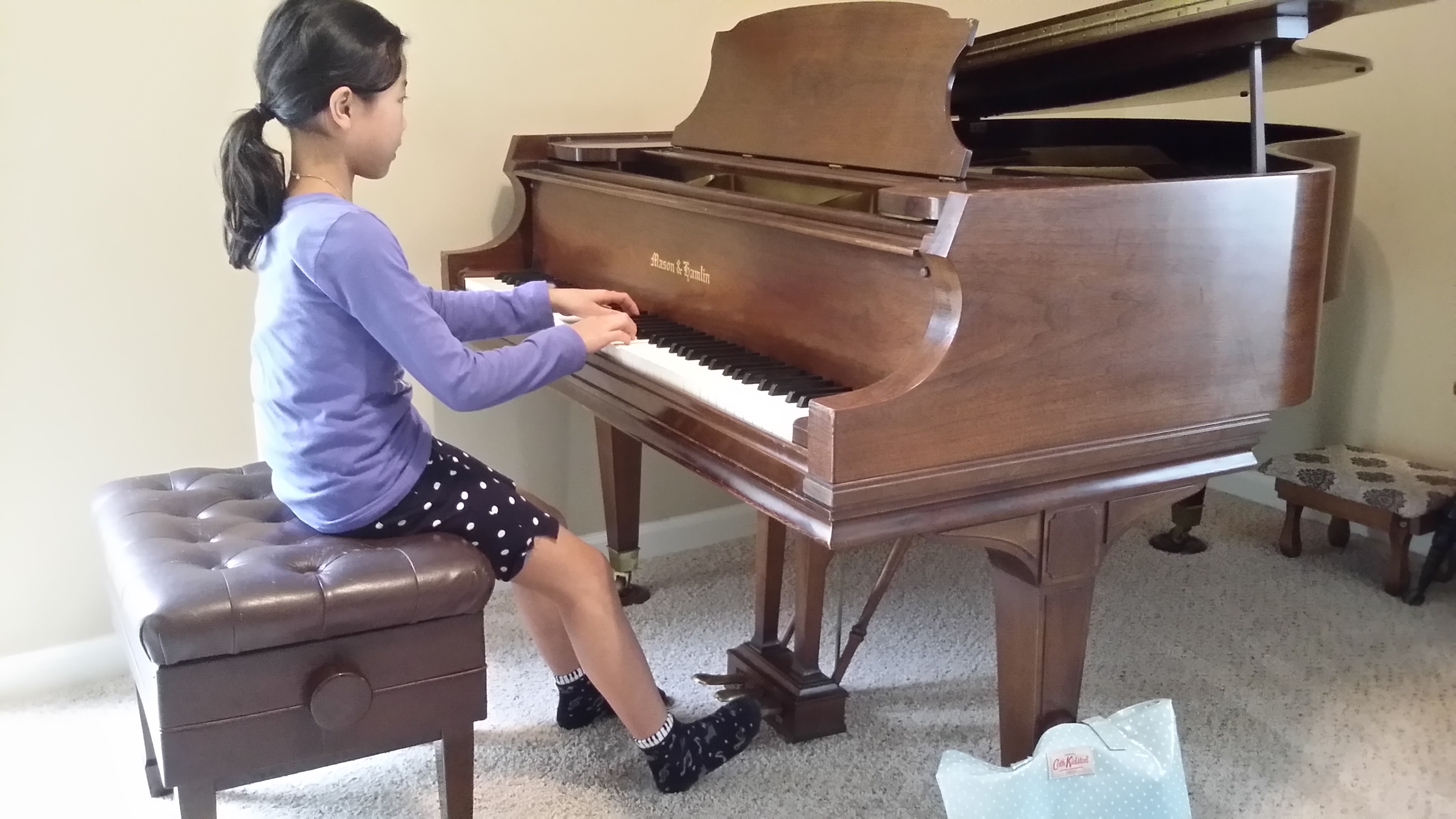7 Practice Tips for Everyone

Regular practice between private lessons is essential. One of the most common reasons students quit lessons is because of struggles over practicing, either through resistance or lack of time. It’s completely normal to have some pushback in this area, so don’t worry!
In my experience, it is rare that a student (particularly a young student) is able to maintain a structured practice routine entirely on their own. This means that for quite some time, you as the parent will need to help guide them. Practicing five days a week for 30, 45 or 60 minutes depending on the age and level is the usual expectation, and below are some additional guidelines that hold true for everyone
1) Don’t Over-schedule
It’s important to balance activities and all too often we see students that are simply overextended. Sports, math team, science team, dance, martial arts, Lego club, drama club, choir, and orchestra, are just a few of the many worthwhile activities students pursue in addition to their music studies. Usually students are enthusiastic to engage in many of these, and it’s up to the parents to help them set reasonable schedules. Sometimes this means making some difficult decisions, but it’s better to think through in advance than to dive into private lessons and risk having a negative experience.
2) Have a set time to practice
Having a set practice time will ensure that practice happens and is a priority, just as homework. Even though many students’ goal for taking lessons is simply enjoyment of music making, most lose interest and don’t experience the pleasure unless they are making steady progress. Practicing takes energy and thought, so try to schedule it at a time that is conducive to learning, such as early in the morning or in the afternoon not too late after school. Having a set practice time established will help to take away the potential drama that tends to arise if a student is comfortably on the couch relaxing and you ask them to practice.
3) Try not to skip more than one or two days/do take vacations!
Learning to master an instrument is similar to learning a language. Three hours of practice spread over six days is far more effective than one afternoon of three hours. However, most students find it refreshing to take some longer-term planned breaks, such as time off during summer vacation and school breaks. This varies greatly for each individual, so make sure to discuss what’s best for you with your teacher.
4) Make sure the practice space is appropriate
Take a good look at your practice space and make sure it has good light, the instrument is in good working order, and that it can be closed off as a quiet area with no interruptions. Sometimes this can be challenging with stationary instruments such as a piano, but it’s important to dedicate the space exclusively for practicing during the planned practice time. It’s always wonderful if students decide to come back and practice or play more on their own, but make sure the space is dedicated as a practice area for the planned time.
5) Have a plan of how much practice you will do
Just as you established a practice time, decide the basics of how much practice is expected. You can use time or number of repetitions or some combination of the two as a guide. Depending on the age and level of your child, you may need to sit with them to ensure they are completing the assignment. It doesn’t matter if you have any music training or not, the important thing is that you will bring support and supervision. Your teacher will give you guidance on what is appropriate for the student’s age and level.
6) Practice deliberately and with purpose
Be honest with yourself about correcting details and practicing with purpose. Try to avoid just playing through mindlessly and hoping for the best. At the same time, don’t get stuck on just one problem area. If you feel you’ve hit a wall, it’s best to move to a different piece or section and come back later. Sometimes a good night’s sleep solves everything.
7) Divide practice
After doing a few warm-up exercises, divide your practice into learning new notes, working on pieces where notes are learned but expressive details need to be added and some spots smoothed out, and review pieces that are already polished. While it shouldn’t be the entire practice session, playing review pieces already learned is important and often the most enjoyable part for students. This is a portion of the practice where it is desirable to play straight through and not stop for little stumbles here and there.